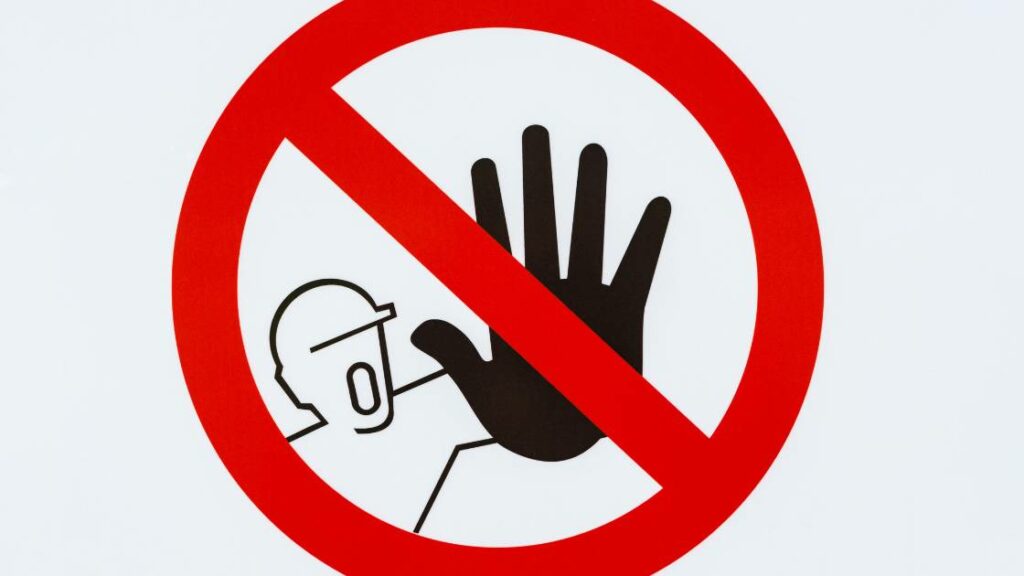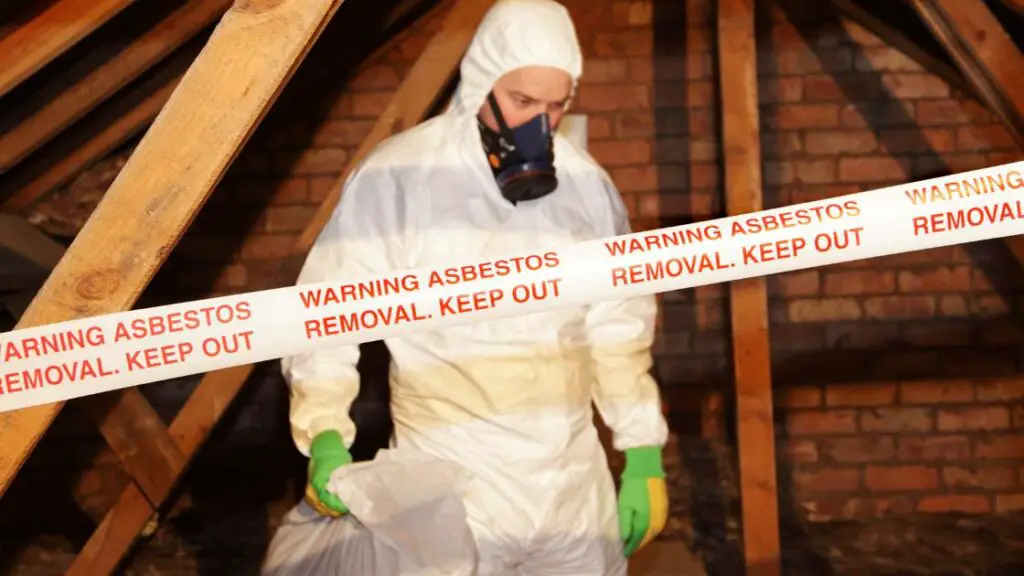If you are remodeling and realize that the tile that you have removed may be made with asbestos, you may feel a bit of panic creeping in and may be wondering what you should do next.
It’s a legitimate concern because asbestos exposure can be really scary and most people don’t have the first clue on how they should respond when dealing with it.
In this article, I am going to cover what you should do if you accidentally have removed asbestos tile. I will will start by going over how you can identify whether tile is made from asbestos, and then go step by step through the process for addressing a potential asbestos tile situation.
Ok, let’s get into it.
The information contained in this post if for informational purposes only. It is not intended to serve as medical or professional advice.
Quick Background on Asbestos
Asbestos was a very popular material that was used in housing (including tile) in the mid 20th century.
It is a naturally occurring fibrous silicate mineral and was popular because of its fire resistance, as well as its strength and insulating properties.
But those properties came at a high cost. We now know that inhaling asbestos fibers can cause a host of serious health issues, including a deadly form of cancer known as mesothelioma.
How to Identify Asbestos Tile
The bad news is that asbestos tile or tiles made with asbestos containing materials (ACM) can look indistinguishable from normal tile.
But that does not mean that it is impossible to identify.
Here are some of the most common signs or characteristics of ACM tiles. Note that none of these characteristics are determinative standing alone, but when combined, you can get a better sense of whether the tile at issue is likely to have ACM.
Asbestos Was Usually Mixed into Vinyl Tiles
Asbestos was used as a common additive to vinyl tiles starting in the 1950s.
So it will be predominantly found in vinyl tiles (although asbestos was also mixed into adhesives, carpet glues, coves and mastics, so you need to be aware of that when remodeling flooring).
Age
Asbestos was used in building materials from the 1920 all the up to the 1980s, but (as noted above) was most widely used as an additive in vinyl tiles during the 1950s and 60s. If the tile is from that era there is a higher chance that the tiles have asbestos.
Size
Tiles with ACM were most commonly manufactured in 9″x 9″ and 12″x 12″, but also came in other sizes as well (e.g., 18″ x 18″).
Color
Asbestos tile came in all sorts of colors, but they commonly came in darker colors with white or gold flecks. But again, these types of colors and patterns were not exclusive to ACM tiles, so this should only be used as a potential initial indicator.
Oily Discoloration
If you see an oily discoloration beneath the tile, that can be an indication that the tile has asbestos. That’s due to the oils in the asphalt contained in the tile seeping out over time.
Ok, so we’ve covered some of the key indicators for asbestos in tile. But I want to highlight again, that it is very difficult to definitely determine whether tiles has ACM with just the naked eye. If you are unsure, you will want to hire a professional to take a sample and run tests to determine if the tile was made with asbestos.
Now let’s turn to some of the steps you should take if you believe you have uncovered or removed a tile with ACM.
Step 1: Stop Work

As soon as you think you have uncovered and potentially disturbed or removed tile with ACM, you should stop work.
As we’ve covered already, inhalation of asbestos fibers is the real risk. So if the tile is intact and not broken or degrading in any way, you are likely not in much danger.
But if you continue work and damage the tile or perhaps even the glue or other materials that may contain asbestos, you increase the health hazard. So stop if you have any suspicions around asbestos with respect to the building materials you are dealing with.
Step 2: Isolate the Affected Area
Once you have discontinued work, make sure to seal off the area as much as possible. You don’t want to have people continuing to walk over damaged tile and further spread any asbestos fibers that may be released due to shoes scuffing over the material, etc.
Obviously, you should tell everyone in the home about the potential issue, so they know to avoid the area and disturb it as little as possible.
You may also want to carefully cover the area to prevent further fibers from being released. Close doors that lead to other areas of the home to prevent further spread and avoid using fans or other items that can circulate the asbestos fibers throughout the home or building.
Step 3: Leave the Debris Alone
When I say stop working, that includes any clean up work, especially around the site where you accidentally removed the tile. Leave tools and other materials where they are.
The more you disturb the site, the more you can release asbestos fibers into the environment.
Step 4: Get Professional Assistance

As you can probably tell from the steps outline above, removing asbestos is not a job for the amateur DIY person.
You need appropriate training and equipment to do it safely and to prevent spread of the asbestos fibers.
So call in the pros once you suspect that you may have disturbed tiles containing ACM.
What Happens Now?
The licensed asbestos abatement pros will likely follow a series of steps to removal the asbestos materials or otherwise remediate the issue. This may include:
- Making Sure the Area is Sealed. This usually involved cordoning off the area with plastic sheeting and taping it off from the rest of the home. This will prevent the spread of fibers into other rooms, etc. Obviously the workers will have protective gear on throughout the process, including respirators and protective coveralls.
- HEPA Vacuuming and Wet Wiping. The pros will likely use special vacuum cleaner (with HEPA filters) to clean the area. They may also wet wipe areas to clean surfaces and remove fibers.
- Removal of Debris. They will properly dispose of all debris and waste from the clean up and remediation effort. You will see them bag the materials and they will ship them off for proper disposal in designated facilities designed for this.
- Air Testing. They will conduct air testing to make sure that the asbestos fibers have been removed to a safe level. This is a key step, so make sure it gets done. Once the areas has passed, you should be able to re-enter the area and use it normally.
Final Thoughts
So there you have it – a step by step guide on what to do if you have accidentally removed asbestos tile, including some tips on how to identify tiles with ACM and what you can expect once you have called in the experts.

